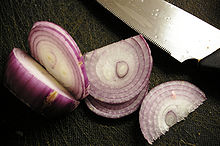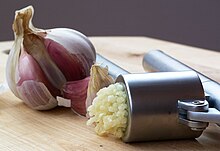Wow. This post in the 'foods to add to your diet' series has proved quite challenging. I've been hoping to give you a bit of a glimpse into the huge variety of foods that are available with a focus on the more unusual, or less commonly eaten foods. However when it came to the white foods, there were some I just couldn’t go past, so my '5 foods' list blew out to 8 foods. When we talk about white foods, we're often talking about the processed and refined kind, the kind people like me tell you to avoid but to avoid any of the foods below based on their colour would be a mistake. We can't paint all white foods with the same brush. The following foods are all naturally white, they are delicious, they are healthy, they are nutrient dense.
Mushrooms
Why mushrooms?
Mushrooms are an amazing source of protein and fibre for their tiny size. They also have a really nice mineral profile including a lovely amount of selenium, which is a potent antioxidant. Shitake mushrooms are used extensively in Chinese medicine and are being researched for their immune boosting capabilities
What are mushrooms good for?
Great source of minerals, as an antioxidant, immune system
Onion and Garlic

I have grouped these two together because while different, they have similar uses and are quite often found together in food. There are two groups of people when it comes to onion and garlic, those that love them, and those that hate them. I personally love love love them both. Onion for example is delicious raw in salads, or diced and sliced in soups and stews. You can chop it into chunks for casseroles or roast it with your roast vegetables where it always ends up tasting sweeter. I mix up my onion colours, but I do like the purple kind for some extra colour. If you hate cutting onion, I’ve found that if you keep it in the fridge, your eyes wont water so much. Don’t forget other types of onions like shallots and spring onions either.
 Garlic when raw has a spicy hot flavour, but it goes beautifully in a
vegetable juice or diced and mixed through guacamole, or baba ganoush (see my
post on sauces, dips and dressings). Its most common use is probably cooked
where it forms the base of flavour for pretty much everything, from soups to
stir fry's. Whenever I am cooking meat in the frying pan or on the grill I will
throw on a few cloves of garlic in their shell, or if I’m roasting vege’s I’ll
throw in a whole bulb, cut up so its easy to divide amongst the plates. Some
people cannot eat either onion or garlic, it makes them feel sick or gives them
gas, but if you can, I would suggest getting these foods into everything you
can!
Garlic when raw has a spicy hot flavour, but it goes beautifully in a
vegetable juice or diced and mixed through guacamole, or baba ganoush (see my
post on sauces, dips and dressings). Its most common use is probably cooked
where it forms the base of flavour for pretty much everything, from soups to
stir fry's. Whenever I am cooking meat in the frying pan or on the grill I will
throw on a few cloves of garlic in their shell, or if I’m roasting vege’s I’ll
throw in a whole bulb, cut up so its easy to divide amongst the plates. Some
people cannot eat either onion or garlic, it makes them feel sick or gives them
gas, but if you can, I would suggest getting these foods into everything you
can! Why onion and garlic?
Onions are a source of quercetin, a potent anti allergy nutrient. They’re also a nice source of minerals, including sulphur, which is involved in liver detoxification. Garlic too is a sulphurous herb and is mineral dense.
What are they good for?
Garlic and onions are both great for liver health. They are also good for allergies and immunity in general, both via the quercetin in onion, and the allicin in garlic. Recent research on aged garlic supplements demonstrate their effectiveness for lowering blood pressure.
Achacha
Why achacha?
Like most fruits, they’re a great source of vitamin C, folate and potassium.
What are they good for?
Skin health, immunity and minerals
Fennel
 Used extensively overseas, in Australia I don’t think we eat enough of this
aniseed flavoured vegetable. Aside from being used to make Absynthe, the lovely
fennel bulb is delicious served with salmon, and can be eaten cooked or raw.
Take a look at Taste.com’s page on all things fennel including some delicious
looking recipes. http://www.taste.com.au/how+to/articles/1125/fennel.
The seeds and dried leaves are also often used in cooking, yum.
Used extensively overseas, in Australia I don’t think we eat enough of this
aniseed flavoured vegetable. Aside from being used to make Absynthe, the lovely
fennel bulb is delicious served with salmon, and can be eaten cooked or raw.
Take a look at Taste.com’s page on all things fennel including some delicious
looking recipes. http://www.taste.com.au/how+to/articles/1125/fennel.
The seeds and dried leaves are also often used in cooking, yum.
Why fennel?
What’s its good for?
Traditionally fennel is used to help bring on breast milk in new mothers and for digestive health. It helps to ease digestive discomfort and gas. You can use the seeds in a tea for this, or buy the tea bags.
Coconut
Now I have just posted a whole piece on coconuts so I wont go into them too much here except to say that if you’re not on the coconut bandwagon yet, you should be! Take a look at my coconut post for links to ways to make coconut water and coconut milk kefir, not to mention coconut yoghurt. It comes as water, oil, flesh and flour.
Cauliflower
The humble cauliflower often gets overlooked for the
brighter and greener broccoli, however this inconspicuous vegetable stands
strong in its own right. If you think it’s bland, just do something to it, like
use it to make this delicious cauliflower rice recipe from Best Recipes http://www.bestrecipes.com.au/recipe/cauliflower-rice-L5801.html.
Otherwise throw it into soups and curries, which will enhance its flavour.
Part of the cruciferous family (with broccoli) it contains
those sulphur compounds mentioned above which assist with liver detoxification.
What’s it good for?
General health, liver detoxification and immunity, as an antioxidant
Quinoa
Now again, I've just posted an article on 6 Alternatives to Gluten Grains so I wont go into too much on Quinoa, pronounced keen-wa, here. This great little seed can be used in replacement of rice.
Why quinoa?
Its higher in protein and lower GI than rice. Good source of amino acids, including lysine. High in B vitamins

Whats it good for?
A good energy food with low GI, can add to the protein value of a vegetarian diet.
Eat up!
Chris
Quinoa
Now again, I've just posted an article on 6 Alternatives to Gluten Grains so I wont go into too much on Quinoa, pronounced keen-wa, here. This great little seed can be used in replacement of rice.
Why quinoa?
Its higher in protein and lower GI than rice. Good source of amino acids, including lysine. High in B vitamins

Whats it good for?
A good energy food with low GI, can add to the protein value of a vegetarian diet.
Eat up!
Chris
No comments:
Post a Comment